What is a Microbiologist?
Job Description & Duties Investigate the growth, structure, development, and other characteristics of microscopic organisms, such as bacteria, algae, or fungi. Includes medical microbiologists who study the relationship between organisms and disease or the effects of antibiotics on microorganisms.
Microbiologist Responsibilities
- Conduct chemical analyses of substances such as acids, alcohols, and enzymes.
- Monitor and perform tests on water, food, and the environment to detect harmful microorganisms or to obtain information about sources of pollution, contamination, or infection.
- Provide laboratory services for health departments, for community environmental health programs, and for physicians needing information for diagnosis and treatment.
- Research use of bacteria and microorganisms to develop vitamins, antibiotics, amino acids, grain alcohol, sugars, and polymers.
- Isolate and maintain cultures of bacteria or other microorganisms in prescribed or developed media, controlling moisture, aeration, temperature, and nutrition.
- Observe action of microorganisms upon living tissues of plants, higher animals, and other microorganisms, and on dead organic matter.
Featured schools near , edit
Microbiologist Needed Skills
Microbiologists state the following job skills are important in their day-to-day work.
Science: Using scientific rules and methods to solve problems.
Writing: Communicating effectively in writing as appropriate for the needs of the audience.
Reading Comprehension: Understanding written sentences and paragraphs in work related documents.
Critical Thinking: Using logic and reasoning to identify the strengths and weaknesses of alternative solutions, conclusions or approaches to problems.
Active Listening: Giving full attention to what other people are saying, taking time to understand the points being made, asking questions as appropriate, and not interrupting at inappropriate times.
Speaking: Talking to others to convey information effectively.
Related Job Titles
- Microbiology Analyst
- Microbiology Director
- Microscopist
- Medical Microbiologist
- Microbiology Supervisor
Is There Job Demand for Microbiologists?
In the United States, there were 23,200 jobs for Microbiologist in 2016. New jobs are being produced at a rate of 8.2% which is above the national average. The Bureau of Labor Statistics predicts 1,900 new jobs for Microbiologist by 2026. There will be an estimated 2,200 positions for Microbiologist per year.
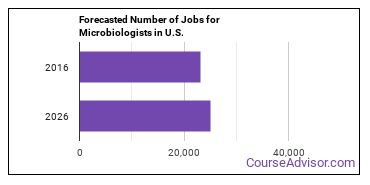
The states with the most job growth for Microbiologist are Nevada, Utah, and New Mexico. Watch out if you plan on working in Vermont, Oklahoma, or North Dakota. These states have the worst job growth for this type of profession.
Salary for a Microbiologist
The salary for Microbiologists ranges between about $41,820 and $133,550 a year.
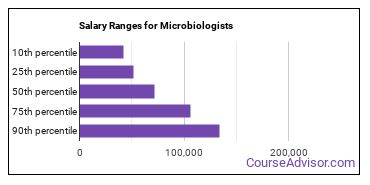
Microbiologists who work in California, Maryland, or District of Columbia, make the highest salaries.
How much do Microbiologists make in each U.S. state?
| State | Annual Mean Salary |
|---|---|
| Alabama | $59,660 |
| Arizona | $75,970 |
| Arkansas | $70,210 |
| California | $102,340 |
| Colorado | $71,860 |
| Connecticut | $75,410 |
| Delaware | $62,470 |
| District of Columbia | $94,630 |
| Florida | $67,650 |
| Georgia | $94,050 |
| Hawaii | $73,870 |
| Idaho | $64,880 |
| Illinois | $62,830 |
| Indiana | $55,370 |
| Iowa | $82,410 |
| Kansas | $53,100 |
| Kentucky | $55,940 |
| Louisiana | $70,000 |
| Maine | $69,890 |
| Maryland | $107,070 |
| Massachusetts | $82,500 |
| Michigan | $61,360 |
| Minnesota | $66,990 |
| Mississippi | $71,720 |
| Missouri | $77,300 |
| Montana | $85,900 |
| Nebraska | $64,380 |
| Nevada | $83,060 |
| New Hampshire | $74,080 |
| New Jersey | $81,720 |
| New Mexico | $50,580 |
| New York | $80,500 |
| North Carolina | $67,050 |
| Ohio | $68,970 |
| Oklahoma | $53,530 |
| Oregon | $66,370 |
| Pennsylvania | $74,780 |
| South Carolina | $59,750 |
| Tennessee | $76,730 |
| Texas | $54,530 |
| Utah | $62,750 |
| Vermont | $58,830 |
| Virginia | $91,940 |
| Washington | $74,660 |
| West Virginia | $51,330 |
| Wisconsin | $62,440 |
What Tools & Technology do Microbiologists Use?
Below is a list of the types of tools and technologies that Microbiologists may use on a daily basis:
- Microsoft Excel
- Microsoft Word
- Microsoft Office
- Microsoft PowerPoint
- Web browser software
- Microsoft Access
- Email software
- Word processing software
- SAP
- Microsoft Windows
- Statistical software
- Laboratory information management system LIMS
- Database management software
- Basic Local Alignment Search Tool BLAST
- PHYLIP
- STARLIMS
- Orchard Software Orchard Harvest LIS
- Protein Explorer
- BD Biosciences CellQuest
- DM2 Bills of Lading
How to Become a Microbiologist
What education is needed to be a Microbiologist?
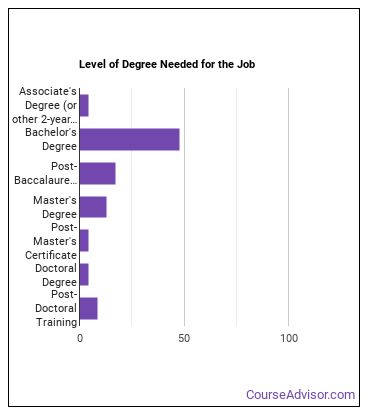
What work experience do I need to become a Microbiologist?
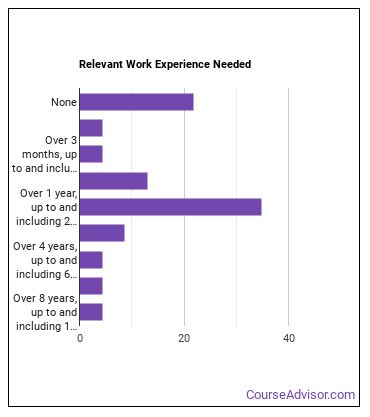
Microbiologists Sector
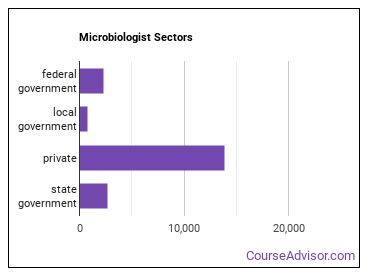
Below are examples of industries where Microbiologists work:
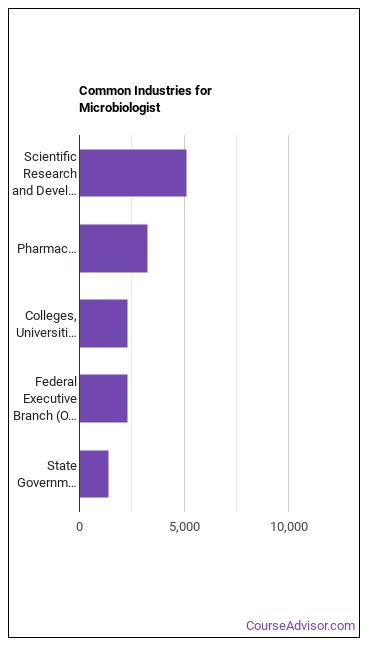
Other Jobs You May be Interested In
Those thinking about becoming a Microbiologist might also be interested in the following careers:
Those who work as a Microbiologist sometimes switch careers to one of these choices:
References:
Image Credit:
More about our data sources and methodologies.
Featured Schools
 Request Info
Request Info
|
Southern New Hampshire University You have goals. Southern New Hampshire University can help you get there. Whether you need a bachelor's degree to get into a career or want a master's degree to move up in your current career, SNHU has an online program for you. Find your degree from over 200 online programs. Learn More > |
